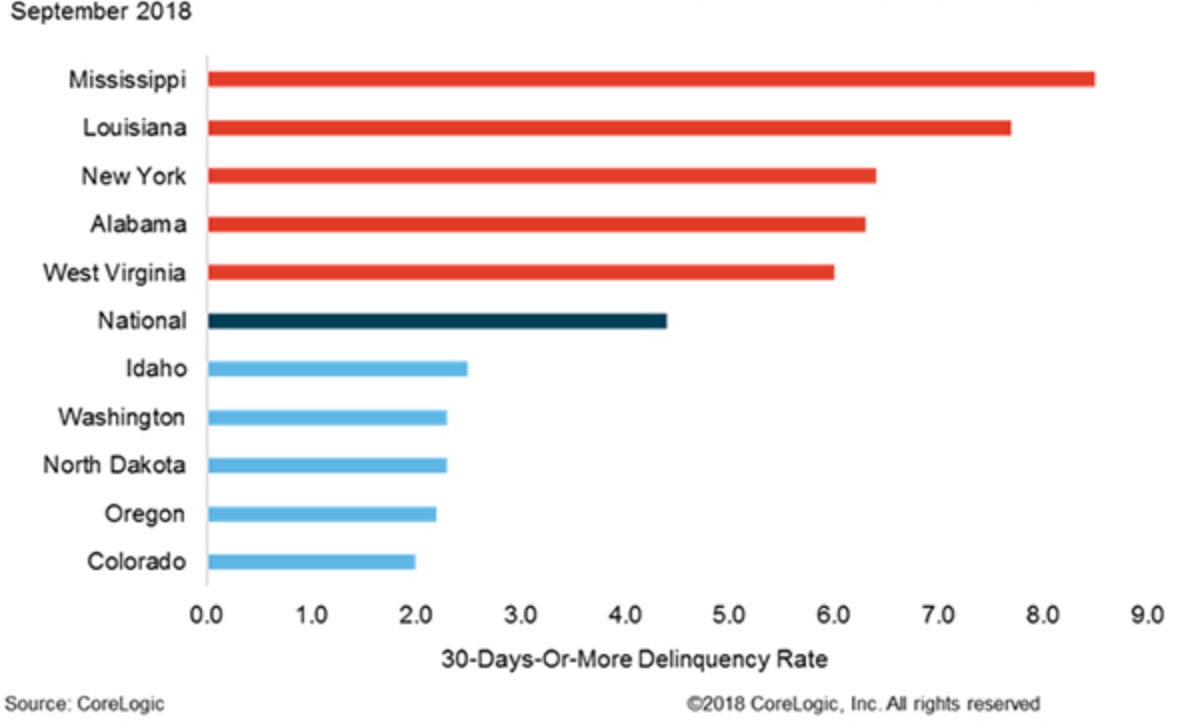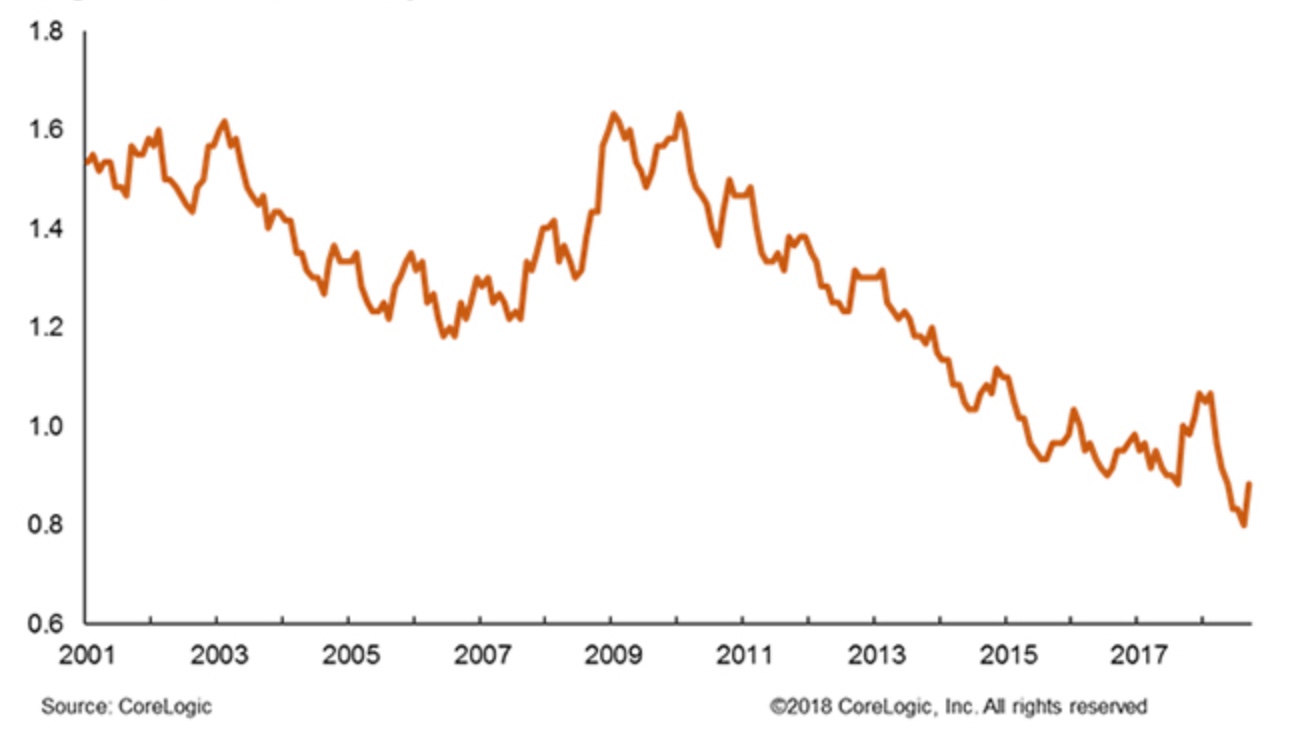CoreLogic reports that mortgage delinquency rates were little changed in September. The percentage of mortgage loans that were 30 or more days delinquent and including those in the process of foreclosure declined by 0.6 percentage point on an annual basis, to a national rate of 4.4 percent. Early delinquencies, those 30 to 59 days past due were down from 2.4 percent in September 2017 to 2.2 percent. Other delinquency rates are reflected in the graphic below.

Serious delinquencies, those more than 90 days past due or in foreclosure were either down or unchanged in every state. Rates however increased in 10 metro areas.
The improvements were despite the considerable disruption along the southern Atlantic Coast caused by Hurricane Florence in September. Seven of the eight metropolitan areas that experienced the highest annual gains in delinquency rates were in North Carolina and South Carolina. In Wilmington, North Carolina the 30-day delinquency rate jumped more than 2 points to 3.8 percent between August and September and was up 1.6 point year-over-year. That put it in a tie for first place with the eighth metro on the list, Grand Rapids, Michigan. CoreLogic says data over the next few months will shed more light on Florence's effect on loan performance .
Frank Nothaft, CoreLogic's Chief Economist said, "The effects of 2018's natural disasters have begun to show clearly in our delinquency data. After Kilauea's eruption began in May, serious delinquency rates jumped on the Big Island by 10 percent between June and September, while falling by 4 percent in the rest of Hawaii. The Carr Fire began late July, and the 30- or 60-day delinquency rate in the Redding metro area jumped 19 percent from August to September. This was the largest monthly spike up in this delinquency metric since July 2006 when the foreclosure crisis was beginning. Additionally, 30-day delinquency rates doubled in major metros in North Carolina in September, the first month after Hurricane Florence reached landfall."
The report also doesn't yet reflect any upcoming impact from two other natural disasters, Hurricane Michael, which caused significant damage in the Florida Panhandle and southeastern Georgia, and the deadly late fall wildfires in California.
CoreLogic examines all stages of delinquency as well as transition rates that indicate the percent of mortgages moving from one stage of delinquency to the next. The share of mortgages that transitioned from current to 30-days past due was1.2 percent in September 2018, down 1.2 percentage point from the previous September. By comparison, in January 2007, just before the start of the financial crisis, the current-to-30-day transition rate was 1.2 percent and peaked in November 2008 at 2 percent.

Frank Martell, President and CEO summed up the month's report. "Outside of areas affected by natural disasters, serious delinquency and foreclosure rates have declined steadily across the nation as the labor market has improved and home prices have risen. However, we have also seen a rise in high loan-to-value and high debt-to-income lending in our CoreLogic TrueStandings data, heightening the risk of a significant upturn in loan default if the economy slips into recession or home prices decline."







